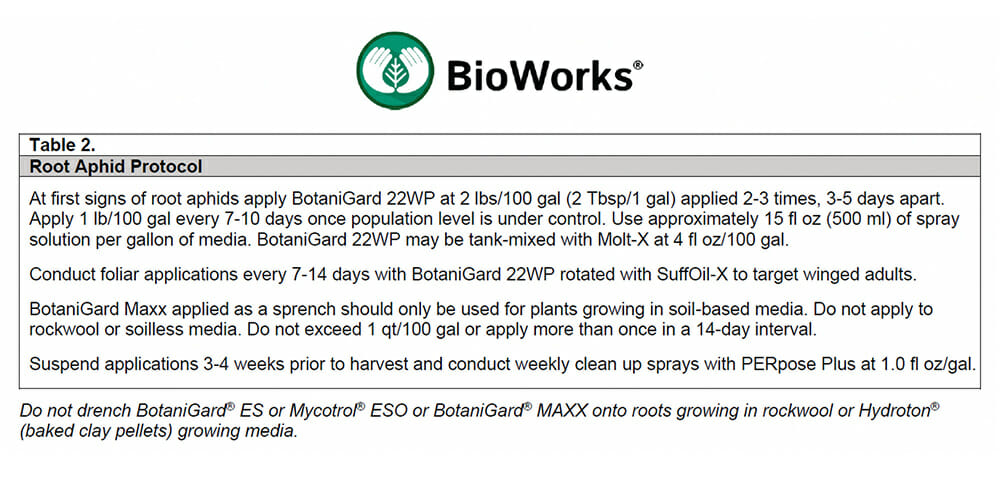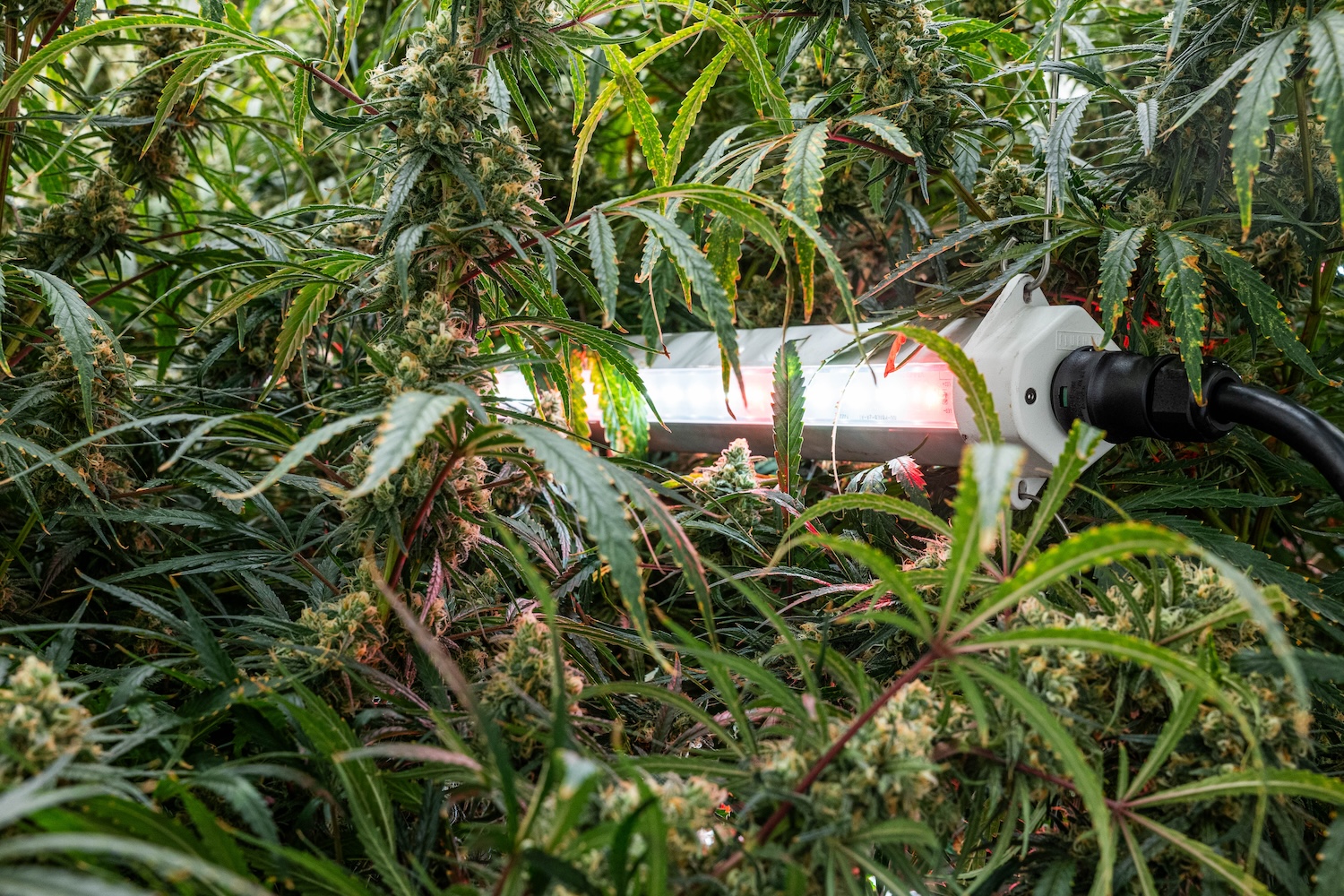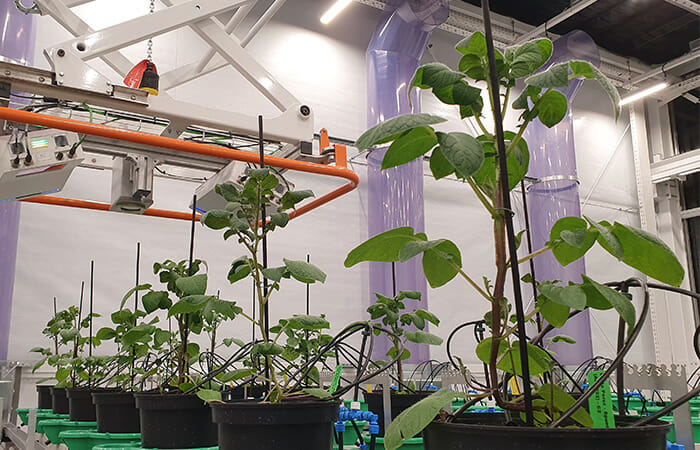Rice Root Aphids: What growers should know about treating the pervasive pest
An increased interest in Rhopalosiphum abdominalis—the rice root aphid first discovered in Japan (Yano, Miyake, & Eastop, 1983)—has emerged in recent years. Cannabis growers in particular are discovering rice root aphids feeding on the root system of their plants, which can cause tremendous damage to a cannabis crop’s root system if left untreated or if aphids reach infestation levels. Maintaining a healthy root zone is a key part of any successful cannabis cultivation, but cannabis isn’t the only plant affected by this insect. Cotton, foliage houseplant, grass, and sedge growers (Kanturski, 2016) are also familiar with the unruly pests which can become a nightmare for a grower’s integrated pest management strategy.
Indoor and greenhouse climates perfect for growing cannabis are also perfect for rice root aphids to continually reproduce. This aphid has an anholocyclic life cycle, meaning it produces asexual females. The rice root aphid’s lifecycle is mostly spent underground (“Rice Root Aphid – Management and Life Cycle“, 2018), reaching reproductive age in about 10 days with adults surviving approximately 30 days. In greenhouses and indoor climates, the rice root aphid does not need to overwinter as it would in cooler climates. Instead, this aphid will reproduce year-round in a protected climate.
When aphid populations reach infestation levels, winged forms will develop and climb up stems or out of pots to fly and move to new plants. Root aphids can cause considerable damage to your crop by sticking in flower buds and leaves or leaving fecal matter on the flower buds. Aphids can ultimately cause a reduction in plant growth, or in extreme cases, crop loss.
Additionally, rice root aphids appear to survive in a variety of media, including coconut coir, rockwool, aeroponics, and even soil. While switching media may ultimately not serve as the best strategy to combat the aphids, growers who use a carbon-based media source have seen improved control when applying biorationals as drenches.
How to scout and identify rice root aphids
The following sections feature input from Julie Graesch, biological program manager for BioWorks, experts in managing plant and soil health using reliable, environmentally responsible products.
Scouting enables growers to recognize new issues within their facility while keeping a comprehensive record of existing pests. How do you know your management practices are working? Keep detailed records of when and what was applied or released, rates, water volume, equipment used, application timing, number and type of pest as well as the location of sticky cards, leaf inspections or root inspections. Identifying pests early and knowing what pests occurred in the past arms growers with critical information that can effectively inform their pest management decisions.
When scouting for rice root aphids, use sticky trap cards and plan to change them weekly, collecting and inspecting the cards as you work to record the number of aphids captured. Growers can also use smaller monitoring cards for tracking flying pest, which can alert the grower before damage is seen. BioWorks suggests placing sticky traps near doorways to trap incoming pests, near plant canopies to trap flying pests, and near soil surfaces to trap pests living near the soil. BioWorks also recommends using colored irrigation flags to identify hotspots in the production area, which helps staff identify areas they should avoid while identifying areas of focus for sprayers.
A tip from our horticulture specialist, Sean Sangster
“We know that white light is ideal for plant development in cannabis, but did you know white light is an added benefit to scouting? It is important to consider not only plant development but the impact your horticulture light has on the human working environment, especially when it comes to identifying outliers in your environment. When evaluating different light spectra, be sure to reference the CRI, or color rendering index. A CRI closets to 100 has the appearance of what humans see as white light”
Learn more on how to compare grow lights here.
Effective treatments for rice root aphids
Sanitation is the utmost priority for a safe, pest-free growing environment. Sanitation should be practiced throughout the life of the crop, but should also be applied to seeds, plugs, transplants, clones, staff, growing structures and media.
Here are a few key sanitation tips from the BioWorks team:
- Clean after each crop cycle. Remove plant debris and sterilize surfaces, equipment, tools, irrigation equipment, greenhouse structures, floors and fans.
- Remove weeds in and around the facility that could harbor insects and disease.
- Obtain transplants from a reputable supplier. Never accept outside plant material without rigorous inspection and quarantine.
- Consider dipping incoming transplants to eliminate insects and disease. Rooted and unrooted cuttings can also be dipped
- Educate crop workers about the risks of bringing in pests from outside the facility as well as moving pests from room to room.
- Manage access to certain areas—especially propagation—and enforce a strict order-of-entry policy for all workers and visitors. For example, someone coming from a vegetation or flowering room should never go into propagation.
In addition to impeccable sanitation processes, growers can consider biopesticides to treat root aphids. Biopesticides are best used preventatively before insect populations reach untenable levels. In addition to preventative biopesticides, it is important to leverage a pitchfork approach—using multiple control agents to manage pests. Root aphids are difficult to control in part because of their location within the media. Whitney Cranshaw and Suzanne Wainwright-Evans state in the Journal of Integrated Pest Management, (2020): 15; 1-3, “Few effective biological controls for rice root aphid in container production have been identified. Among commercially developed products, certain entomopathogenic fungi (e.g., Beauveria bassiana, Isaria fumosorosea) seem to have greatest efficacy.”
Entomopathogenic (insect-killing) fungus works by attaching to an insect’s cuticle, penetrating the insect’s cuticle by enzymes and force, multiplying and spreading in the insect’s blood via blastospores, and finally, but not always, sporulating to continue the infection process. This method is typically very effective in treating a variety of insects, including aphids, however, aphids can combat the fungus by simply molting off the previous cuticle. Under ideal conditions, aphids reach adulthood in as little as one week, molting four times. Entomopathogenic fungi need time to germinate and penetrate before the cuticle is shed. Therefore, to ensure optimal efficacy, it’s important for growers to incorporate an insect growth regulator such as azadirachtin to slow or stop the aphid’s molting process.
Finally, aphids have a maddening habit of generating winged forms when populations increase or when light levels change, increasing the likelihood of spreading root aphids throughout a facility. In the case of alates (winged aphids), incorporate foliar management strategies such as large sticky cards, pyrethrins or natural enemies.
For more information about root aphid protocol, see the below chart from BioWorks:

Product use on cannabis is subject to state law. Refer to product labels for complete application details. Additional technical information is available on BioWorks website (bioworksinc.com). Always read and follow label directions.

JULIE GRAESCH
BPM – Insect Control Management
Office: (800) 877-9443
Direct: (515) 370-2299
jgraesch@bioworksinc.com
www.bioworksinc.com
Yano, K., Miyake, T., & Eastop, V. (1983). The biology and economic importance of rice aphids (Hemiptera: Aphididae): A review. Bulletin of Entomological Research, 73(4), 539-566. doi:10.1017/S0007485300009160
Kanturski, M. (2016). Morphological separateness of aphid genera Stomaphis Walker and Parastomaphis Pašek (Insecta, Hemiptera, Aphididae). 2016 International Congress of Entomology. doi:10.1603/ice.2016.117584
Rice Root Aphid – Management and Life Cycle. (2018, December 31). Retrieved from https://mlachapell.com/rice-root-aphid-management-and-life-cycle/



